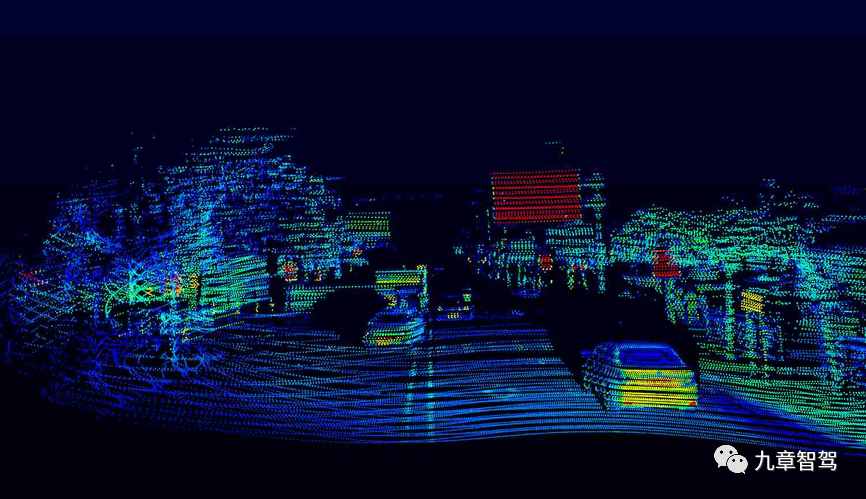Author: Su Qingtao
“It’s not simply about whether it’s “difficult” or “not difficult,” it depends on who it is difficult for. Before we embarked on this technological path, we evaluated it. If we have the ability to do it well, then this “difficulty” becomes our moat. We have been selling this solution since 2019, but we’re not afraid of others disassembling it because there are high technological barriers inside. It’s easy to know how to do it, but it’s very difficult to do it well.”
“The entire LiDAR industry is still immature. If we only pursue extreme performance, the reliability of vehicle regulations will be greatly affected. If a certain technology is advanced but not yet mature, we will not promote it for commercial interests.”
Since the LiDAR mass production battle began, Livox, the LiDAR supplier for XPeng P5, has always piqued the curiosity of many car manufacturers and investors.
This company, incubated by DJI, surprised people with its price at the 2020 CES and subsequently released more industrial-grade products, such as the Horizon series. More parameter information regarding the vehicle regulations-grade product HAP has also been made public and is now highly sought after by major manufacturers.

From a product performance perspective, according to industry experts, HAP can basically meet most main manufacturers’ requirements for front-end main LiDAR. For example, HAP can detect black vehicles at a distance of 150 meters (with a reflectivity of about 5%) and detect pedestrians wearing black clothing at 120 meters away.
What’s interesting is that in the promotion of LiDAR in the market, some companies will claim that the “furthest” detection distance can reach 200 meters but won’t mention what the corresponding resolution is. On the other hand, some companies will unilaterally emphasize how high the resolution is but won’t say how far the corresponding detection distance is. The Livox product is unique in that it has achieved a balance between these two indicators and extended this balance to its consideration and balance of product performance, reliability, cost, and mass producibility.
Although the industry generally has a basic understanding of Livox’s comprehensive product capabilities, many insiders, including the author, are not familiar with the breakthroughs made in its underlying core technology and what products Livox is practicing for vehicle-grade LiDAR.From mid-March to the end of April, the author had in-depth discussions twice with Livox’s marketing and product technology teams. In addition to explaining in detail Livox’s core technologies such as “prism scanning,” “non-repetitive scanning,” and “DL-Pack packaging,” they also disclosed for the first time a series of efforts and achievements that Livox has made around “mass production” and “automotive specifications.”
What impressed me the most after the discussions was that, in order to ensure the reliability of the product’s automotive specifications, Livox did not simply pursue flashy performance parameters. This was undoubtedly a “counter-current” move in the era of “parameter redundancy” in intelligent driving.
Why adopt the prism scanning scheme?
Although Livox HAP only has 6 laser emitters and receivers, it can achieve a high point cloud density, largely due to its unique prism scanning scheme.
From the appearance perspective, the most obvious difference between the prism and the MEMS mirrors and rotating mirrors is that the scanning mirror of the latter two is a thin reflective mirror. Among them, the MEMS vibrates around a cantilever beam, while the rotating mirror rotates around an axis. The prism, on the other hand, rotates through a transparent glass that is thin on one side and thick on the other.
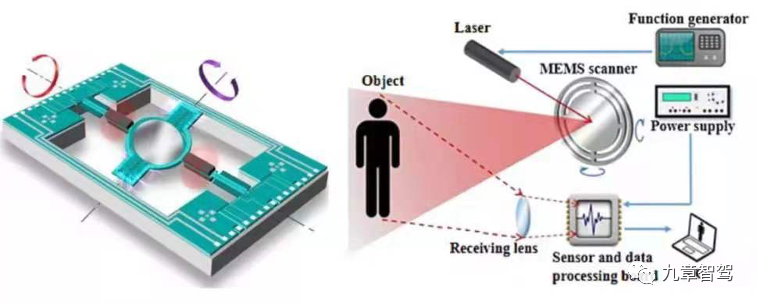
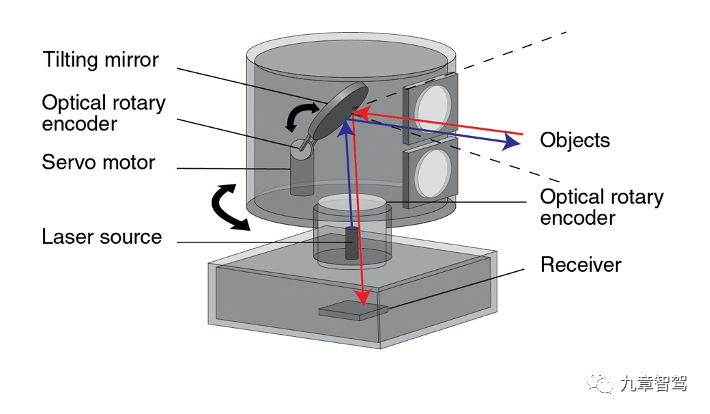
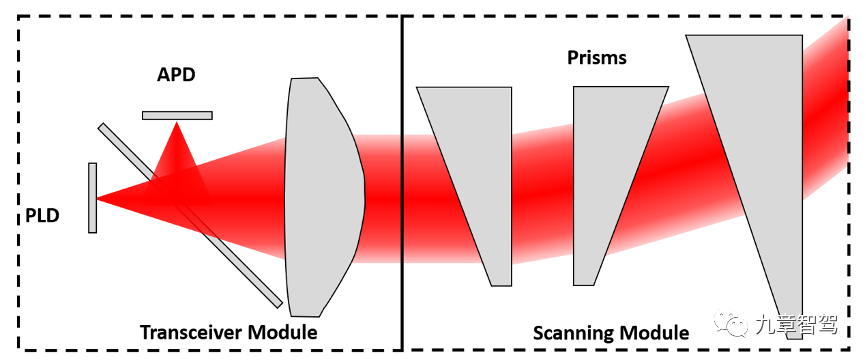
The Livox team shared: “Essentially, we do not exclude the exploration of any technological path, and our forward-looking research team also conducts research on various scanning technologies. In our opinion, MEMS is a mature technology that has been widely used in various industrial fields, but for the large-diameter MEMS (3mm or more double-axis scanning) required by the LiDAR, this scheme has not been truly verified through mass production. There are many difficulties in terms of consistency, cost, automated assembly and fixing, internal and external stress deformation, and high and low temperature deformation.”
In Livox’s view, regardless of whether rotating prisms or rotating reflecting mirrors are used after excluding MEMS, the motor bearing rotation technology involved has been applied to various automotive market components processes for a long time and on a large scale, making automotive LiDAR a more robust choice.Translated English Markdown Text:
Regarding why Livox prism is “thicker on one side and thinner on the other”, they explained that “the laser beam will deflect after emission. Through optical parameter design, a larger FOV can be achieved without the need for multiple module splicing. As a result, under harsh working conditions such as high temperature and vibration, the overall performance of the point cloud is more stable and reliable, and problems such as layering and displacement are less likely to occur.”
Another advantage of using a prism is that it can reduce costs by using fewer transceivers to achieve higher line numbers within a single frame. It is reported that HAP’s laser emitters and receivers each have only six units. The high-speed rotating prism can form an “equivalent of 144 lines” effect in the middle of the ROI (Region of Interest) area through refraction.
It is understood that some foreign companies are also trying prism solutions, but overall, mainstream LiDAR manufacturers have rarely explored this solution. On the one hand, the reason is that Livox has accumulated 587 patents in this field. If other companies adopt similar designs, it will be difficult to avoid patent risks. However, on the other hand, the prism solution requires the integration of optical and mechanical knowledge, which presents high technical barriers.
As we all know, the lifespan of a motor is negatively correlated with its rotational speed, that is, the higher the rotational speed, the shorter the lifespan of the motor. Under the rotating mirror scheme, for example, the rotational speed of the motor in the case of Valeo’s Scala is only 600 RPM, while under the prism scheme, the rotational speed of the motor may exceed 6000 RPM – because the former only needs to rotate once to cover the entire field of view, while the latter needs to continuously rotate to form enough different laser refraction directions to obtain different exit angles and achieve the effect of covering the entire field of view. Such high-speed rotation inevitably poses extremely high demands on the robustness of the bearings.
Secondly, under high-speed rotation of the motor, the grease (lubricant) inside the bearing will be thrown off and easily stick to the prism mirror surface. The grease throwing off problem can cause unpredictable scattering and refraction interference to the optical path, which in turn reduces the range, accuracy, or increases noise of the LiDAR. In the most serious cases, due to excessive loss of lubricating oil, the lubricating oil film between the bearing ball and the raceway cannot be produced, and the increase of friction between the ball and the raceway causes the rolling resistance of the bearing to increase and the bearing to gradually fail.
Livox understands how challenging these two issues are, but after four years of research and development, they have overcome these difficulties.
Firstly, Livox’s prism scheme motors have two processes: the motor bearings of the Horizon prototype are relatively large (with a diameter of 30 mm), and the prism is driven to rotate by the motor that is wrapped around it. However, in the production HAP, Livox introduced the small bearing solution used in Teledyne’s Tele-15, with a bearing diameter of only 5 mm, and the motor is embedded in the center of the prism.Assuming constant rotational speed, the smaller the radius of the bearing, the lower the linear speed, resulting in a longer lifespan. Moreover, with the radius of the bearing reduced by six times, the increase in lifespan is more than six times assuming constant rotational speed.
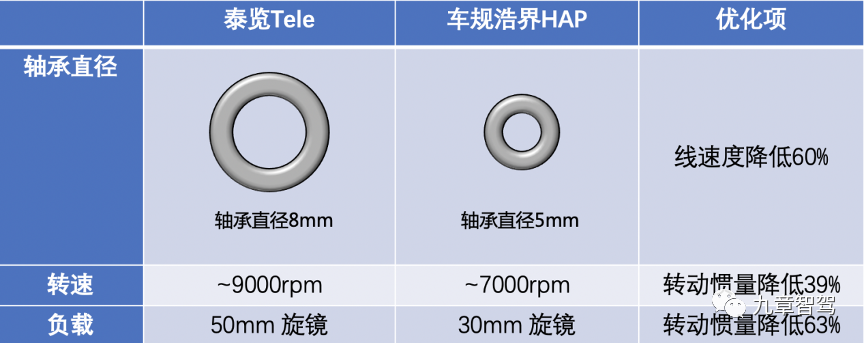
Meanwhile, it is noted that, based on the accelerated reliability model of the vehicle regulations, the 2100 hours of operating time of the laser radar at a high temperature of 85°C is equivalent to the 12000-hour working time required by vehicles under all operating conditions. The lifespan of the Horizon (industrial version), which is a product complying with the vehicle regulations, has already reached twice the requirements of passenger vehicles. (It has passed the 4200-hour high-temperature endurance test at 85°C.) It is reported that the HAP has passed the high-temperature endurance test, but due to the start time of the test, it has not surpassed the record of 4200 hours by the Tele-15. However, the Livox team is confident that the lifespan of the HAP, based on higher design standards, will be further improved upon the basis of the Tele-15.
On the other hand, after the bearing becomes smaller, the demand for grease injection is greatly reduced. (Industrial-grade Horizon requires 600 mg of grease injection, while Tele-15 and HAP require 40 mg and 16 mg of grease injection, respectively.) There is simply not much grease available to “splash away”. At the same time, due to the decrease in linear speed, the risk of grease splash is further suppressed. Therefore, there is no oil pollution problem in the high-temperature accelerated aging test of the Tele-15 and HAP.
At this point, a question arises: what is the cost of smaller bearings? The Livox team answered: “Generally, the use of smaller bearing solutions will affect the light-transmitting aperture, but because our light-transmitting aperture is very large, the impact on performance is limited.”
Regarding the technical difficulties of this path, the Livox product manager mentioned: “We cannot simply say whether it is ‘difficult’ or ‘not difficult’; it depends on who is doing it. We evaluated this path before we walked on it. If we have the ability to do it well, then this ‘difficulty’ is actually our moat.”
For example, it is indeed difficult to produce a small motor like the HAP that meets the requirements, but DJI, the company that hatches Livox, has already accumulated relevant technological capabilities when producing unmanned aerial products – precise control of high-speed rotating motors is the premise of ensuring stable flight of unmanned aerial vehicles. The electric motor technology driving the prism rotation in the HAP laser radar is in line with the technology used in motors in unmanned aerial vehicles produced by DJI.According to reports, each DJI drone is equipped with 6-7 precision miniature motors for flight and gimbal stabilization, and DJI produces several million drones each year, which gives them a leading edge in motor speed control, reliability, bearing and grease solutions, and upstream supply chain management.
Livox states, “We publicly disclosed this solution in 2019, but we’re not afraid of others dismantling it because the technical barriers here are high, knowing how to do it is simple, but doing it well is extremely difficult.”
How to View Non-Repeating Scans?
Leveraging prism technology, Livox has also explored two techniques: super frame rate and non-repeating scans.
According to my research, the “attention” (point cloud distribution) of LiDAR detection can be divided into the following types:
- Uniform distribution within the entire FOV
- FOV has an overall relatively uniform distribution, but due to splicing and other reasons, there may be gaps in the middle area.
- Point clouds are the densest in the middle area of the FOV.
When driving, human attention (visual perception) does not evenly distribute along the field of view, but rather focuses more on the front, and relies on peripheral vision to notice other areas. After deep communication with many autonomous driving clients, the Livox team took a “first principle” approach and believed that concentrating more point clouds in the middle area was more reasonable.
“The concept of product design is actually to do more with less resources and use good steel on the edge of the blade.” To achieve this, Livox introduced the “super frame rate” technology for the first time in the industry.
The so-called “super frame rate” means that when scanning the Region of Interest (ROI), the scanning frequency will be twice that of other areas. The refresh rate of the entire FOV is 10 Hz, but the frequency is increased to 20 Hz when scanning the middle area, which means it scans twice in 100 ms. This ensures faster recognition of objects in the front ROI. The super frame rate technology allows the system to detect target objects within 50 ms (20 Hz), while mainstream traditional LiDAR requires 100 ms (10 Hz).
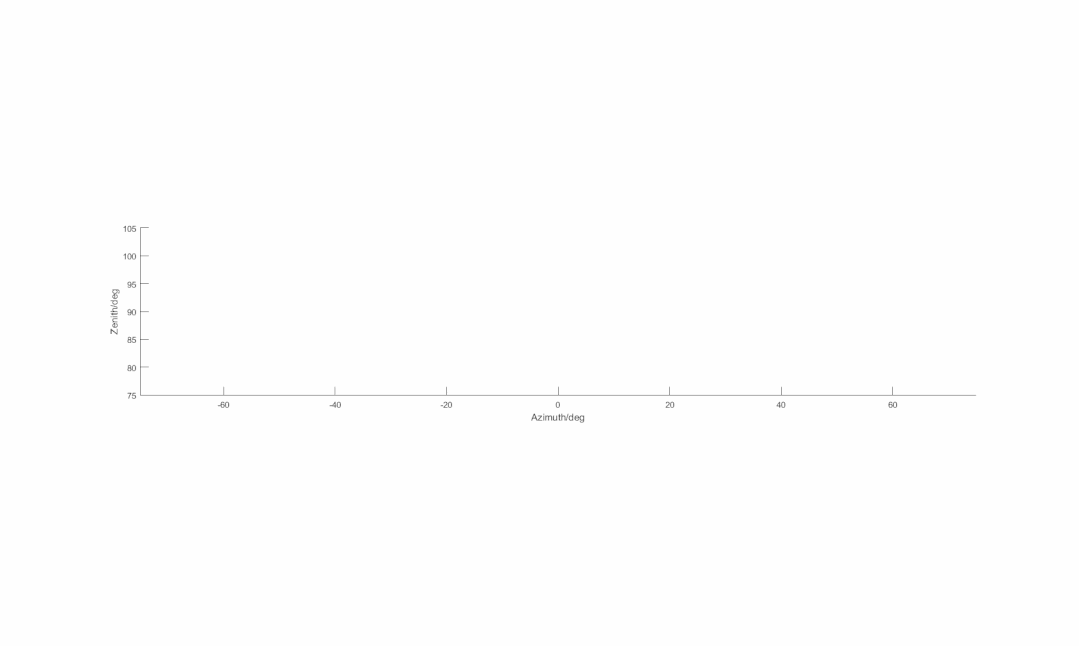
After discussing “super frame rate,” let’s talk about Livox’s “non-repeating scan” technology.Currently, the common scanning method for LiDARs on the market is the repeating scanning scheme, where the scanning positions of each point cloud frame is linear and repeated in the same area (scanned once within the FOV range); whereas Livox uses a non-repeating scanning method, where each frame’s scanning curve will experience a slight shift, achieving multiple scans within the FOV range.
According to Livox, non-repeating scanning has significant advantages in low-speed or static scenarios such as congested roads, parking and calibration, because these scenes allow ample time for LiDAR scanning, and non-repeating scanning causes slightly offset positions between consecutive frames, resulting in scans of different areas. This, in turn, facilitates continuous point cloud integration, resulting in increasingly dense point clouds and an equivalent resolution level that could even reach that of high-definition photos. This is beneficial for detecting small obstacles.
However, some customers have raised concerns about Livox’s non-repeating scanning technology, questioning whether it takes a long time to accumulate data for achieving a high resolution. Livox’s HAP (Hybrid Alignment and Positioning) can obtain high resolutions of 0.16° x 0.2° (equivalent to 144 lines) even at a standard 10 Hz refresh rate. “144 lines are the minimum performance level of our LiDAR, and non-repeating scanning can be understood as an additional feature that improves its performance,” explained the Livox team.
What is the concept of “10 Hz, 144 lines”? Some products in the market claim to achieve over 600 lines of effect, but in reality, this is only achievable at a 1 Hz refresh rate, and at the commonly used 10 Hz refresh rate, only 64 lines are achievable. “The parameters we provide to the market have their own limited conditions, and the high or low of core parameters are only worth discussing when other limited conditions are also reasonable,” said the Livox team.
Of course, Livox does not insist on using the non-repeating scanning technique in any situation. For example, in high-speed scenarios where there is not enough time for LiDAR integration, the vehicle may have traveled more than 30 meters in the time it takes to integrate for 1 second. In response to this scenario, Livox team has also introduced firmware that is compatible with the repeating scanning technique for some customers. All customers need to do is send a configuration command, and the LiDAR will switch from non-repeating to repeating scanning within 1 second. Since the point cloud positions between consecutive frames are relatively stable, it is theoretically more conducive to identifying small targets through inter-frame differences.
However, Livox also pointed out that some top-notch algorithm companies for autonomous driving have verified through two different modes that repeating and non-repeating scanning are not significantly influential for deep learning algorithms, and that key to identifying effectiveness essentially lies in range, point density and quality of data annotation.However, some car companies may still have concerns due to their own underdeveloped algorithmic capabilities. Even clients with larger algorithm teams may have “historical burdens” when faced with new forms of solid-state lidar and non-repetitive scan algorithms, as they are accustomed to algorithms based on repetitive scanning schemes after prolonged study of 360° rotating mechanical lidar. To address these concerns of car companies, Livox has provided a complete set of open source algorithms to help them quickly deploy algorithms from 0 to 1. At the same time, Livox will also provide higher-level algorithm support to car companies that intend to cooperate.
“We have an upper-level algorithm team, which has been developing point cloud algorithms based on Livox hardware for the past two years and has made some progress. We should be able to showcase some of the results to some clients within this year. For these potential high-volume purchase clients, there is no need for them to go through the same process as us. In a sense, the results of the past two years are what we are willing to empower them with. If the open source algorithms on Github represent 0 to 1, we hope to help our core clients grow from 1 to 80 quickly. Most importantly, this set of algorithms will have strong generalization, and adaptability will be good no matter what hardware solutions are adopted by OEMs,” said the Livox product manager.
Livox has introduced to the author the phased achievements of the current open source algorithms. For the most commonly used deep learning methods in perception, good perception results can be achieved by completing corresponding data collection, labeling, and training. Livox’s open source demo algorithms based on Horizon showcasing the recognition ability of common targets such as vehicles and pedestrians can prove this point. Similarly, Livox will provide end-to-end support from deployment to implementation.
Livox Pedestrian Small Object Detection and Tracking Algorithm
(1*HAP B Sample)
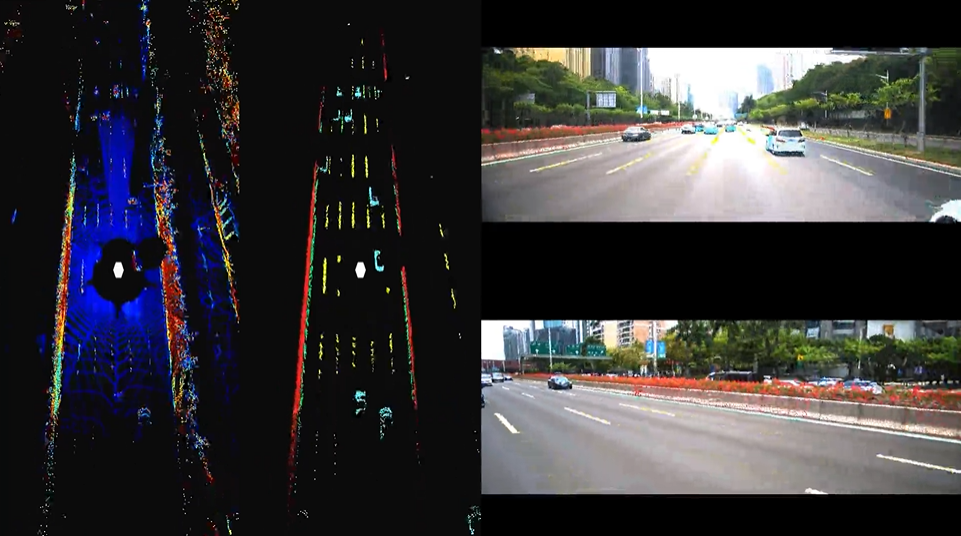
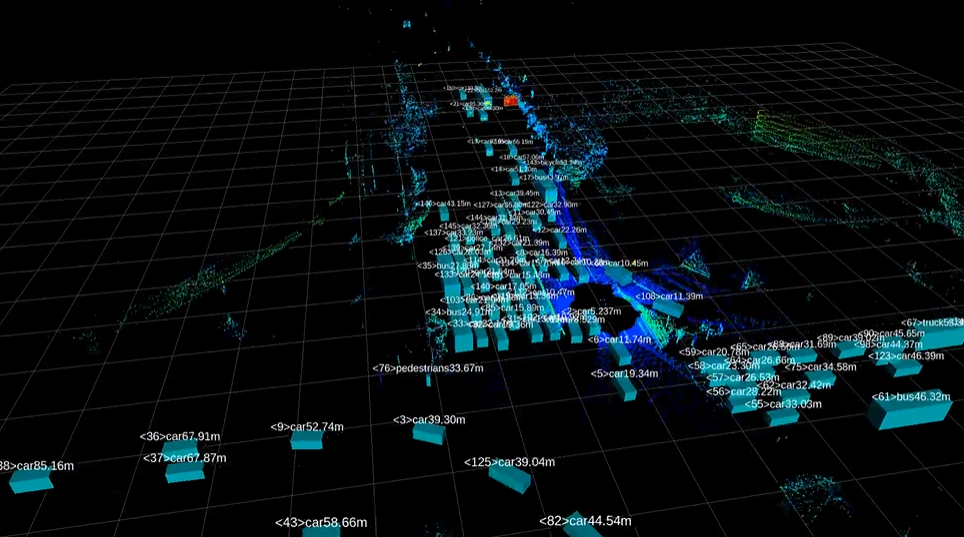
Although there is indeed a cost for algorithm migration, due to Livox’s huge cost advantage, the real gold and silver that can be saved when it is truly commercially used on a large scale is far greater than the cost of algorithm migration.
The Secret Behind an Annual Capacity of 200,000 Units
As Livox pursues powerful performance, it pays great attention to how to use technological means to break through the process bottleneck for mass production in order to achieve the goal of automotive regulation and production.
Currently, for most LIDAR manufacturers, the biggest process bottleneck in mass production is on the focusing link (aligning the laser emission end with the receiving end). If the focus is not done well, the yield will be low, which will increase the hidden cost of the product; and if the product design is not well considered in order to achieve an efficient focus result, the production rhythm will drop sharply, resulting in sacrificing mass production to pursue efficiency. Therefore, Livox has conducted extensive research on focusing technology from the beginning of product design.
Livox’s product has 6 laser emitters and 6 receivers. If they are 「one-to-one」 corresponded according to traditional processes, it will still need to focus 6 times even if there are no mistakes every time, not to mention that it can easily go wrong. If this problem is not solved, even if the product performance and reliability are excellent, it will be difficult to meet more future market demand.
To solve this problem, Livox’s solution is to use semiconductor packaging technology to package 6 emitters (small chips of 3 mm x 4 mm) and 6 receivers separately in a 「box」 so that they can be aligned at once.
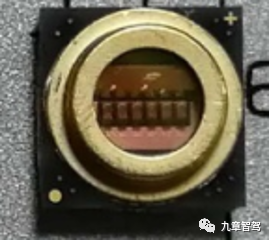
Livox internally named this proprietary packaging technology as 「DL-PACK all air-tight packaging」. It is worth noting that the cost of packaging is not cheaper than the entire laser emitter module, so Livox has put a lot of effort into it.
After using the DL-PACK all air-tight packaging technology, the efficiency of the focusing link for the laser emitter and receiver has been improved by more than 5-6 times. In fact, due to the fact that it is much easier to align the 「box」 with the other 「box」 than to align a single laser emitter with a receiver, the efficiency of focusing has increased tens of times!The shipment volume of Livox increased by about four times year-on-year in 2020, and our goal for this year and next year is 5-6 times growth. The demand in the market is here, and if the product design cannot support large-scale production, our business goal cannot be achieved. Livox mentioned the commercial value behind this technology.
However, what surprised the author the most is that this technology not only satisfies the scalable production of current product forms, but also has future-oriented performance improvements and compatibility. If we need to achieve higher density point cloud quality in the future and increase the number of lasers from 6 to 8, 10 or even 12, with the support of DL-PACK full hermetic sealing technology, only a little change in the size of the “box” is needed for focusing, and an update of the fixture in the focusing link is sufficient to start production. Therefore, the manufacturing cost almost does not increase.
In terms of data, before introducing this technology, the UPH of Livox’s focusing workstations stayed at the single-digit level, which means only a few laser radars can be produced in an hour. According to Livox’s plan, by the end of the year, the entire production line will be automated except for the “loading and unloading” link. At that time, the UPH of a single workstation will be increased to 40 pieces/hour, and the annual production capacity of a single production line can reach 200,000 pieces.
The advantage of using DL-PACK technology is not only reflected in the scalable productivity and performance improvements, but also in a hidden feature.
The Livox team said that not all manufacturers can protect the laser emitter and receiver with air tightness, and even some manufacturers believe that the exposed emitter and receiver can also meet the reliability requirements of automotive regulations. However, Livox’s experiments have shown that if air tightness is poor, high and low temperature shocks, water vapor, and corrosive gases will inevitably penetrate after long-term use. If the laser emitter and receiver are in contact for a long time, the risk of both failures will greatly increase. DL-Pack packaging technology can effectively isolate water vapor, toxic gases, dust and other unfavorable interference from the laser emitter, significantly improve stability after long-term operation, and significantly improve the lifespan of laser radars.”Anything cannot be judged solely by superficial parameters. It’s important to understand the logic and limiting conditions behind it. The principle of a LiDAR is not complicated, but despite almost 20 years since the birth of high-performance LiDAR for cars, it still hasn’t been widely implemented. This is because many people overlook the difficulty of engineering implementation. If we aim only for the ultimate performance, we don’t necessarily need the DL-Pack. Without it, the range of HAP can reach over 200 meters, which is unique in terms of this parameter. However, after realizing the cost of decreased production capacity by 10 times and the significant increase in the probability of light source and reception failure, we firmly believe that there is no need to excessively pursue a single performance indicator to achieve the ultimate.
However, if DL-Pack’s fully airtight packaging technology is so good, shouldn’t all manufacturers be able to do it? Livox claims that adopting this technology has a high barrier and can result in a significant increase in cost, especially for some technical solutions. Generally, the more laser emitters there are, the greater the cost increase.
Firstly, there is a barrier at the technical principle level. Some companies’ adopted technical routes determine that laser emitters are difficult to package.
According to a product dissection diagram seen by the author on site, six emitters in Livox’s product are tightly arranged together, making packaging easier. However, in the products produced by another company that uses the same 905 nm light source, the spacing between each laser emitter is larger and the cost of packaging using semiconductor processes will be higher.
Moreover, the engineering barrier is even higher. For instance, EEL is edge-emitting, so after packaging, it needs to emit light upward uniformly. Hence, multiple micrometer-level micro mirrors are needed inside the metal tube shell, which requires high precision. In addition, the connection between the metal and glass used in the packaging must be solid and reliable at the junction to withstand thermal deformation caused by high and low temperature shocks, among other problems.
Through dialogues with some autonomous driving companies, the author learned that Livox is, indeed, leading the industry in terms of engineering implementation, accumulating a lot of engineering knowledge. Thus, they can consider many details during R&D and design, which is beyond their competitors’ current capabilities.
Stability and reliability > Fancy parameters
No matter how advanced the technology adopted is, ultimately, it needs to meet the automotive regulatory standards to truly enter the market. However, how to define “automotive regulations” still seems a bit mysterious, and various companies’ definitions are different. In many cases, it’s their own decision-making.”Livox’s team mentioned that “Livox fully absorbs the industry’s common and reliable testing standards for considering various risk points of vehicle regulations in the product design stage, combined with close cooperation with multiple OEM manufacturers, we have a deeper and more comprehensive understanding of ‘vehicle regulations’. However, the most critical two criteria for measuring whether your product meets vehicle regulation standards are: 1. whether the OEM is willing to pay for it, and 2. whether the product can withstand the quality test after large-scale production use.”
In other words, to achieve vehicle regulation level, products not only need to meet industry standards, but also need to meet differentiated standards for different vehicle model projects of the OEMs.
In the early stage of the lidar industry, many manufacturers attached great importance to pushing the product’s performance parameters to the extreme, but sacrificed reliability. Livox, on the other hand, started with forward-looking mass production and therefore, put special emphasis on reliability. For example, Livox has never had a traditional mechanical rotary lidar because they know that “it cannot pass vehicle regulations” (which has become common knowledge in the industry). In addition, Livox expresses their opinion on “advanced” technical solutions such as 1550 nm light source, SPAD reception, and ultra-high point frequency.
Why Livox doesn’t use 1550 nm light source
In the view of Livox, 1550 nm has a higher human eye safety threshold and the fiber optic laser also has better beam quality, which is an undeniable advantage of this scheme. However, fiber optic lasers require pumping light sources, doped gain fibers, fiber couplers and other devices, and the system is very complex with low photoelectric conversion efficiency, so if the lidar overall demands compact size, system reliability and heat dissipation become crucial problems.
In addition, the 1550 nm receiver is made by InGaAs technology, which is incompatible with mature silicon semiconductor technology. The power consumption of 1550 nm is also high. The power consumption of a single laser in general is around 20 W, while the Livox HAP’s overall power consumption is only 13 W. Overall, the 1550 nm technology has low maturity, high cost, and the volume and power consumption are both large, making it difficult to achieve mass production in vehicle regulations.
On the other hand, even if fiber optic lasers are not considered, although 1550 nm semiconductor lasers can achieve similar volumes, power consumption, and costs as 905 nm semiconductor lasers, but due to limitations of device capability, the peak output power is similar to 905 nm semiconductor lasers, losing the most important high-power advantage of the 1550 nm scheme.
I understand that Livox’s pre-research team has been keeping an eye on the 1550 nm scheme, but they believe that based on the many reasons mentioned above, the maturity of this scheme is still low, and it is not suitable for mass production projects within the next two years until issues such as power consumption and environmental use are resolved.
Why not adopt SPAD reception schemeExcept for 1550 nm lasers, another means of pursuing longer detection range is to use SPAD (Single Photon Avalanche Diode) with higher sensitivity on the laser receiver side, instead of APD (Avalanche Photodiode).
APD works in the linear region of the photodiode, and its dynamic range can reach 106~107, which stabilizes its operation under various extreme lighting environments. However, for signals of extreme weakness with the same aperture, APD’s response may not be as good as that of a high-performance SPAD (e.g. photon detection efficiency > 20%), which means that its range in low light environments might be slightly weaker than SPAD’s.
Although a high-performance SPAD has higher sensitivity and can achieve longer detection distance in weak light, its drawbacks are also evident – due to the hypersensitivity of SPAD, it needs time to recover after every detection. If the background noise is too strong, SPAD will be in a “fatigue” state due to frequent misfire, leading to significantly increased point cloud noise and degradation of the range. In addition, high temperature will further affect the noise level of SPAD. Besides, on the basis of existing adverse factors such as dark count, afterpulse effect, crosstalk, etc., its performance deterioration will worsen.
Overall, in low light environments like night scenes without strong background light, the performance of a high-performance SPAD may be better than APD’s. However, compared with other sensors, the laser radar itself performs better in weak light environments. Therefore, the advantage of SPAD over APD in this environment is not obvious, or is a marginal effect with diminishing returns. However, in environments with strong sunlight and extreme temperatures, the comprehensive performance of existing SPADs is significantly inferior to that of APDs. Livox believes that the most important aspect of mass-produced products is that they should not pursue the highest index in a single environment, but rather should consider their ability to perform stably under various extreme conditions.
For the above situation, if the SPAD scheme is still adopted, the conventional solution in the industry is to connect multiple SPADs in parallel (i.e. SiPM) to obtain higher dynamic range to cope with strong lighting scenes. However, the number of SPADs added in parallel is difficult to make up for the order of magnitude difference compared with APD. At the same time, it also brings problems such as increased chip area and process difficulty, which still need to be solved.
Of course, the method of algorithm filtering can also be used to reduce the impact of SPAD noise on object recognition, but the cost is that it may eliminate the truly useful signals, resulting in missed recognition – this is like pouring out the bathwater together with the baby when draining.
“SPAD is a bit like the Six Meridian Divine Sword. It is indeed powerful in certain situations but it is also prone to failure. APD may not look stunning, but its value lies in performance stability – even low reflectivity objects can be measured in high temperature and strong background light,” Livox explains figuratively in their R&D studies.After careful consideration of different options, HAP has decisively chosen the APD solution that is more suitable for long-distance outdoor ranging.
As shown in the figure below, HAP presents the actual point cloud detection effects when the LiDAR is placed horizontally and exposed to direct sunlight, respectively. The test results show that HAP can detect small branches under strong light with large dynamic range, and the point cloud is clear and the noise rate is low in the entire FOV under visual conditions.
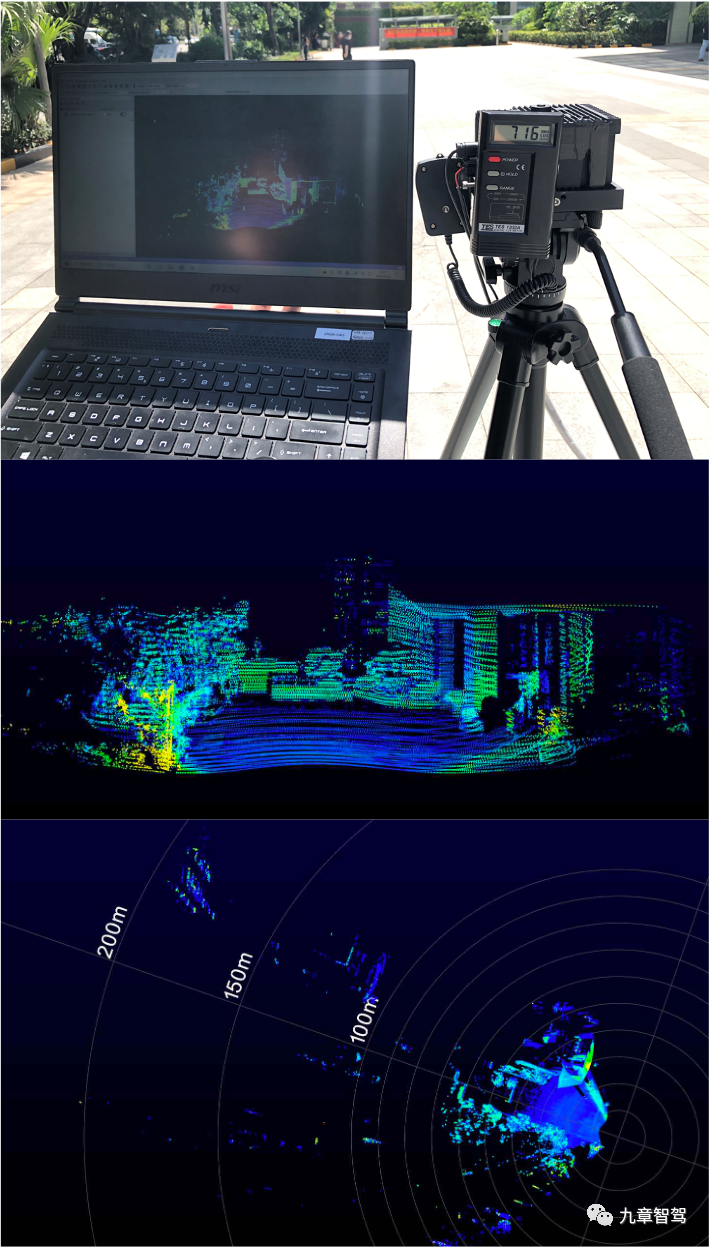
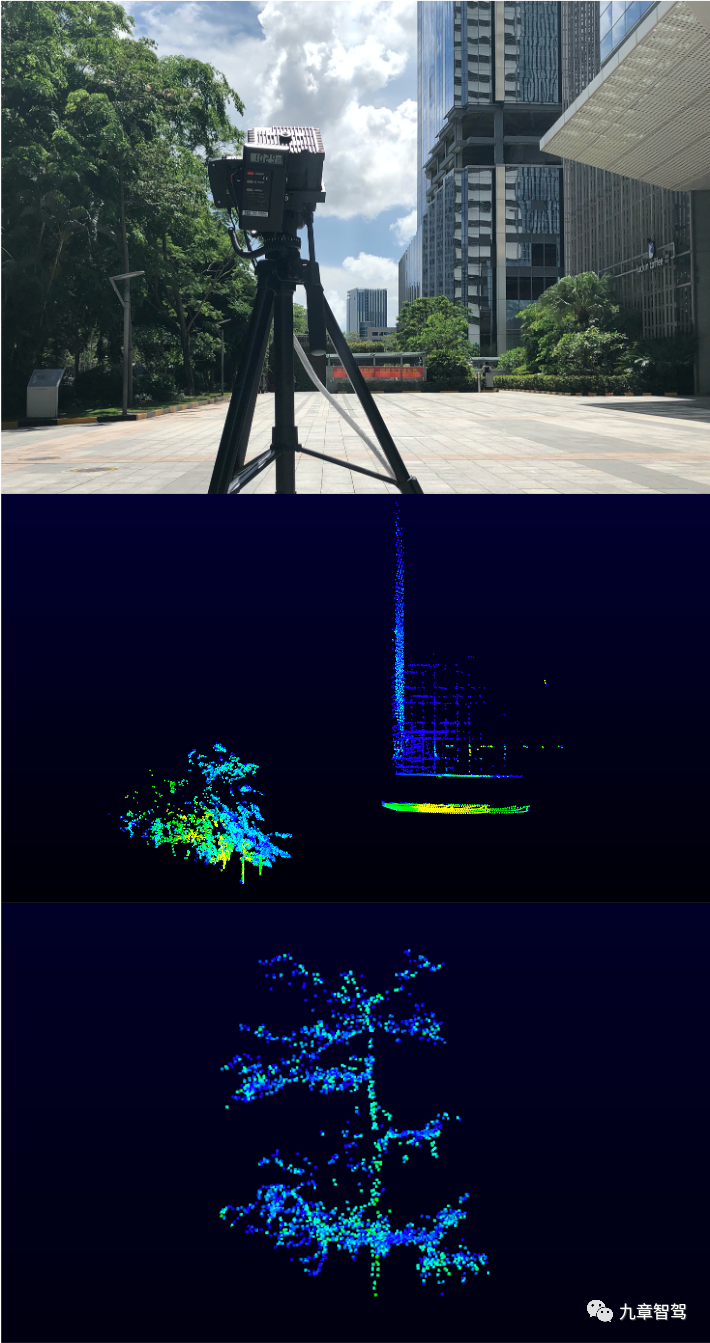
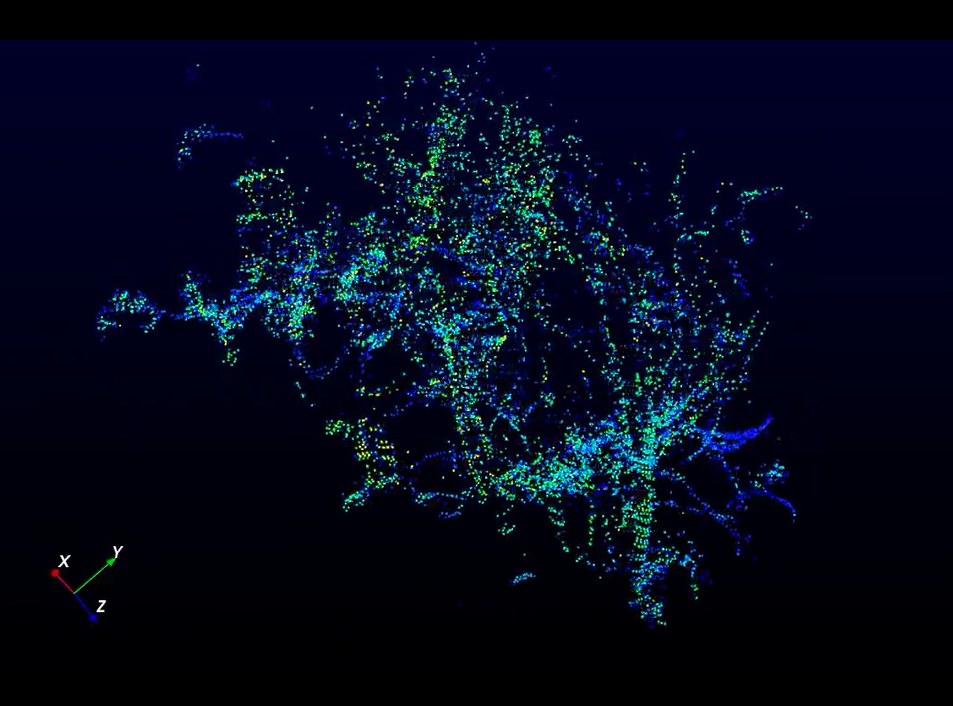
“Some mobile phone cameras on the market have reached 100 million pixels, but Apple has been using 12 million pixels for years. Judging by the parameters, it seems that Apple is far behind the former, but the actual shooting results of the two are often not that different. When it comes to LiDAR, we do not deny the 1550 nm solution or SPAD technology, but considering the balance of various pros and cons, we hope to provide customers with products that can be mass-produced and delivered stably,” said the Livox product manager.
Why not use a high point frequency?
In order to ensure product life, Livox is also very restrained in setting the laser emission frequency.
The laser emission frequency, usually referred to as “point frequency”, that is, how many laser beams the LiDAR emits in one second, is the most critical factor affecting point cloud density. During the phase when LiDAR is used as a marketing highlight, automakers pay special attention to point cloud density when choosing LiDAR, and some automakers even propose to calculate how much money should be paid according to point cloud density.Market-leading companies have achieved a single-laser point frequency of up to 150K/s. Livox HAP uses six lasers in total and, by this standard, should be able to achieve a point frequency of 900K/s. However, the actual point frequency of HAP is only 450K/s, which means that each individual laser’s point frequency is only 75K/s. “To make the demo look stunning, we can easily increase the point frequency by simply finding a prototype machine to increase the frequency of the control signal. In theory, the single laser could be adjusted to above 1,000K/s. But technically, this would be over-pressing the life of the laser, and commercially, this would be an irresponsible attitude towards the customer and the industry.”
The Livox product manager also made a vivid analogy: “You have six cows, and normally they produce 10 kilograms of milk a day. Now, in order to boost performance, you make each cow produce 20 kilograms of milk a day. This seems to dramatically increase the overall milk production. But in fact, each cow bears a heavy load and is more likely to retire early. What we need to ensure is that the laser has no significant attenuation or damage throughout its entire lifecycle, which requires great restraint on the point frequency.”
Of course, I believe that Livox’s confidence in doing this also comes from the performance compatibility of DL-Pack mentioned earlier. If necessary, Livox can quickly import more lasers into the next generation of products. It may be wiser to wait for the right time instead of “squeezing every cow” by increasing the number of cows.
In Livox’s eyes, reliability is always given a higher priority than aesthetics. “The entire automotive LiDAR industry is still immature, and various solutions have not undergone large-scale verification with an annual production of more than 100,000 units. If we blindly pursue performance to the extreme, reliability will be greatly affected. We do not pursue financing for public listing or short-term popularity, instead, we focus on producing good products. If the technology is not mature enough, we will neither aggressively increase the performance parameters nor promote it several years ahead of time for commercial interests.”
High standards in engineering and testing
In addition to ensuring that the selected technical route can meet automotive regulations, Livox also has strict standards in engineering and testing.
As an example of the overall design and materials used, Livox HAP is one of the few companies that use high-strength glass as a transceiver window. Compared to ordinary plastic windows, glass has higher hardness, better durability, and transparency. It also performs better in long-term use under the effects of temperature changes, wind, frost, rain, and snow, especially as it targets the 10-year lifespan requirement of automotive regulations.And the glass window is less prone to dirt, even if there is dirt, the impact on the performance of the LiDAR is less than 10% according to practical tests. Meanwhile, the LiDAR itself has a built-in alarm for dirt, which reminds users to clean it when the dirt exceeds a certain critical value.
The high-strength glass has already passed the vehicle-grade rock impact test. The requirement for vehicle-grade is that the glass cannot crack after being hit by rocks, the machine functions are intact, and the performance attenuation caused by surface pits is within an acceptable range. During the communication, Livox team showed a picture to the author. After the rock impact test, the aluminum alloy frame of the LiDAR was all scratched, but the glass lens still had no cracks. The author also learned that the tempered glass used by HAP has a surface hardness of 8H, and it can pass the ISO20567 standard’s most stringent rock impact test, showing the reliability of its anti-collision and anti-cracking performance.
“Our engineers have provided a set of comparative data. The strength of this level of rock impact test can be equivalently understood as driving on a country road covered with rocks for more than 6 years, and the LiDAR window can still be guaranteed not to be broken,” Livox further explained.
In addition to the strict requirements of engineering, Livox has also invested heavily in reliability testing standards. It is reported that Livox has completed more than 70 vehicle-grade reliability tests requirements in a testing center that is shared with DJI’s car-mounted products. The center is not only built in accordance with the national CNAS certification standards, but also, according to the latest information on DJI’s car-mounted products exhibited at the Shanghai Auto Show, the facility and system standards of the testing center have been recognized by the world’s top automaker Volkswagen Group.
It is reported that in addition to a few tests such as rock impact and toxic gases that are outsourced, Livox HAP has completed more than 70 vehicle-grade reliability test contents that comply with ISO16750 and other industry standards in the testing center.
Not only using the best facilities to do the most comprehensive testing, the Livox team is also practicing higher self-requirements in the fuzziness of vehicle-grade definition nowadays.
“For example, the high-temperature durability test, the industry’s general practice is to test the LiDAR in an 85°C temperature box for 1,100 hours, while our standard is 2,100 hours.” Therefore, what defines vehicle-grade for LiDAR is still without a unified conclusion. However, it is gratifying that the Livox team has already participated with multiple industry organizations in drafting and formulating industry-related standards for LiDAR.
Conclusion
In the second half of last year, a responsible person of a LiDAR manufacturer said when discussing the industry trend with the author that Livox is their most respected competitor – not only in technology, but also in organizational ability. “DJI is a vision-driven company.”Although Livox is already one of the highly-regarded leading laser radar manufacturers, they are not complacent. In my opinion, the competition between autonomous driving and laser radar is a long-term marathon. The determination and attitude demonstrated by the Livox team in product design and business layout has given me more expectation for their future.
On the evening of December 8th last year, while taking a walk, Livox personnel said this when discussing the competitive landscape of the industry: “The road is long and arduous. Taking down mass production orders and having laser radar equipped on mass-produced vehicles cannot be considered a stage victory. Only when consumers walk into the store and ask ‘Does this car have laser radar and who provides it?’ can we confidently say that laser radar has truly improved user experience.”
This article is a translation by ChatGPT of a Chinese report from 42HOW. If you have any questions about it, please email bd@42how.com.
